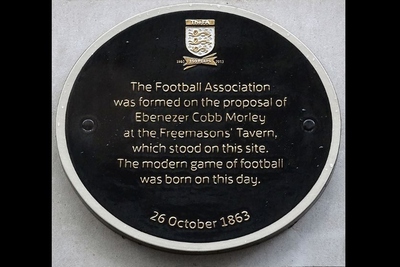
The Football Association governs football not only in England but also in Jersey, Guernsey and the Isle Of Man.
It was formed in 1863 and is the oldest football association anywhere in the world. It oversees every aspect of both the amateur and professional game in the territory that it’s responsible for.
But why was it formed in the first place? Who was responsible for its formation? Has it developed much since 1863?
We look at these questions and more in order to help you understand why football in England is the way it is.
Before The FA
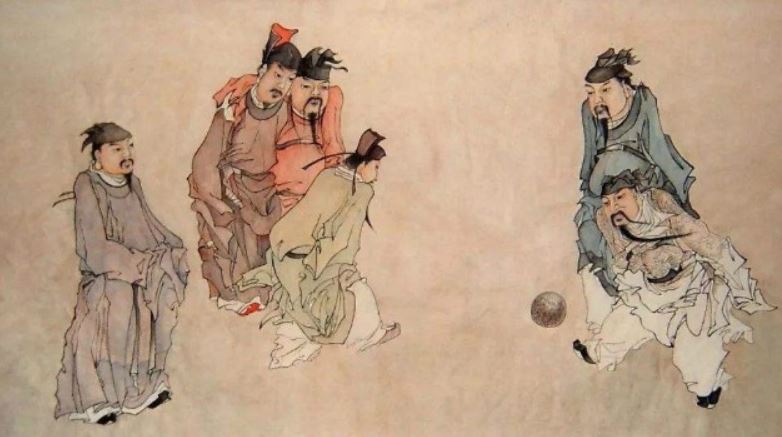
The Football Association might have been formed in 1863, but football had been played for years before that. And when we say years we’re not joking.
Even FIFA have acknowledged that Tsu’ Chu, Cuju or Zuqiu was an early version of the game played during the Han Dynasty in China in the second and third centuries BC. The English might like to claim they invented football, but they really didn’t.
What they did do, however, was create a more formal version of the game as we understand it to be played today. Before the formation of the FA there weren’t any rules for the game that were accepted by everyone who played it. Instead each school or organisation that played the game made up their own rules, particularly at public schools throughout the country.
That lack of official organisation led to chaos when schoolboys from around the country got together at university and all of the players played the game according to different rules.
In 1848 some sense of organisation was set out when Cambridge University attempted to devise a set of rules that other universities soon followed. These became known as the Cambridge Rules, with another set of rules called the Sheffield Rules used by Northern clubs during the 1950s.
The Beginnings Of The FA
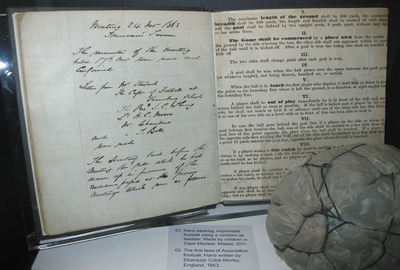
On a Monday evening on the 26th of October 1863, representatives of eleven different London clubs gathered together in The Freemason’s Tavern on Great Queen Street in order to agree on common rules that would be accepted across the country. No more Cambridge Rules or Sheffield Rules or rules from anywhere else, just ‘The Rules Of Football’.
The meeting came about after Ebenezer Cobb Morley, the captain and founder of Barnes, had written to Bell’s Life newspaper in 1862 suggesting that football needed set rules and a governing body similar in structure to how the Marylebone Cricket Club ruled cricket. His letter set in motion a series of events that led to the gathering in the backroom of a pub a year later.
That initial meeting was only just the beginning, however. The first official version of the rules were drawn up over six different meetings at the pub over the following three months. There were a number of crucial moments that led to an important divide during that time. F. M. Campbell withdrew his club’s support of the FA when two rules established at the penultimate meeting were removed during the final one. The first rule allowed players to run with the ball in their hands and the second allowed the obstruction of such a player.
Instead of joining the FA, Campbell’s team, Blackheath, instead joined other English rugby clubs in continuing to play the game their own way before setting up the Rugby Football Union in 1871. This is where the term ‘soccer’ comes from, as the split between those that wanted to play to the ‘association rules’ and those that didn’t needed new names.
Who Was There In 1863?
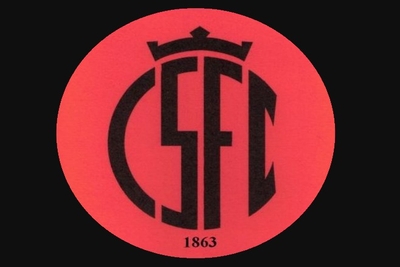
As well as Ebenezer Cobb Morley representing Barnes there were another ten clubs represented at the initial meetings of the FA when the rules of the game were outlined. Civil Service, the Crusaders, Forest of Leytonstone, No Names Club of Kilburn, Crystal Palace, Blackheath, Kensington School, Perceval House of Blackheath, Surbiton and Blackheath Proprietary School all had representatives at the meeting. Charterhouse also sent their captain, B. F. Hartshome, but they chose to decline the offer to join the new association.
Nowadays the only one of those clubs still in existence and playing football is Civil Service Football Club who play their games in the Southern Amateur League. Crystal Palace is a well-known club, of course, but it’s not the same one as exists in the Premier League. Rather it was an amateur club set up by groundkeepers from the Crystal Palace Exhibition Centre.
The rest of the clubs mentioned are either now defunct or were one of the ones who chose not to play football as it is known today and instead wanted to continue with the rules that became known as rugby football.
Putting Theory Into Practice
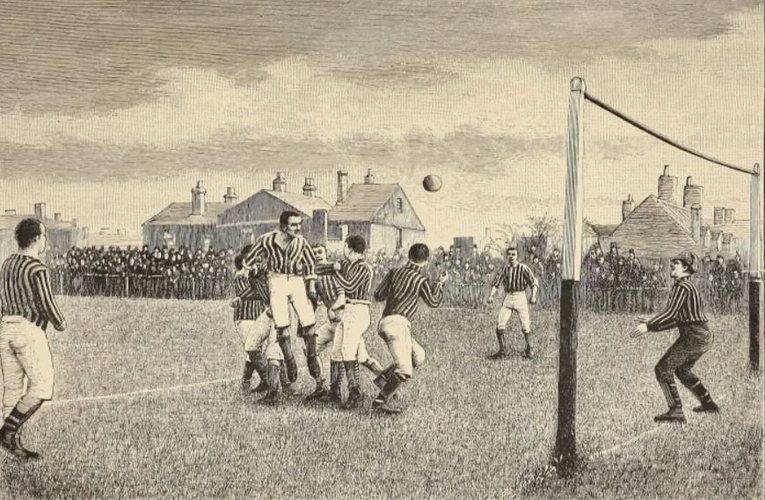
Having finally decided on the first draught of the rules that would be played in the game moving forward, the newly formed Football Association was scheduled to take place on the 2nd of January 1864.
Like a child who finds his presents on Christmas Eve and can’t want to play with them, however, the enthusiastic members of the new FA played an experimental game on the 19th of December 1863.
The game was between Ebenezer Morley’s Barnes team and nearby Richmond who were, ironically, not members of the newly formed association.
The game ended in a 0-0 draw and the representatives of Richmond were clearly less than impressed as they chose to continue playing the old rules and later helped to form the Rugby Football Union.
The first official game was played on the 9th of January 1864, with a toast given to “Success to football, irrespective of class or creed” after the final whistle.
Alternative Football Associations
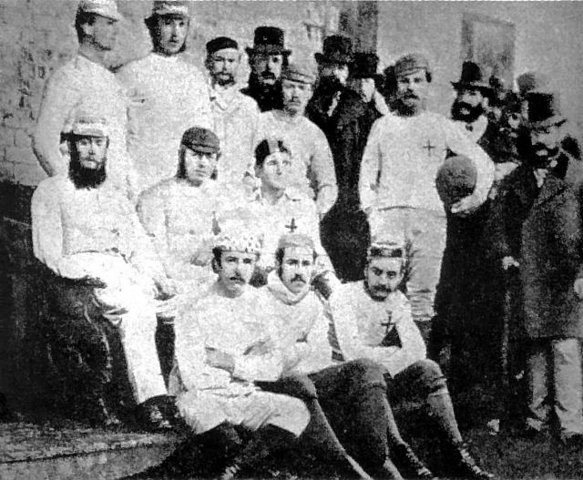
It wasn’t all plain sailing, however, with the FA we’ve been talking about known as the London Football Association. There was also The Sheffield Football Association that continued to play the Sheffield Rules we mentioned earlier after the formation of the London FA.
It was actually the formation of the Football Association Cup in 1871 that led to the realisation that an undisputed set of rules was required moving forward. There had been 16 different inter-association matches played under the Sheffield Rules, the London Rules or the Mixed Rules since 1863.
In 1877 things were clarified once and for all. In April of that year a set of rules were outlined, with the majority of them coming from the London Football Association’s rulebook but with a number also being incorporated from the Sheffield Rules. These formed the basis of the Football Association’s rules that we know and argue with to this very day.
